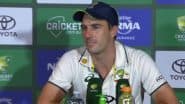Yekaterinburg (Russia) , Jun 20 (AFP) VAR and a trio of spectacular free kicks have led to a spike in the number of goals from set plays in Russia, with some already calling it "the World Cup of set pieces".
With all the teams having played at least one game, roughly half of the goals at the tournament so far have come from set pieces -- which will disappoint the football purists.
It led to one joke doing the rounds on social media saying that the Video Assistant Referee (VAR) system, which is making its World Cup debut, will have more assists than Lionel Messi and Cristiano Ronaldo.
Aliou Cisse, coach of Senegal, said: "We know that nowadays defensive systems are very tight so set pieces will be decisive weapons during the group matches." The numbers bear that out.
Following Sweden's 1-0 win against South Korea on Monday, thanks to a penalty awarded with the help of VAR, football analytics firm Opta Sports said 53.8 percent of the 26 goals up to that point had come from set plays.
That chimes with the calculations of Mads Davidsen, technical director at the Chinese top-tier side Shanghai SIPG, who said: "That is significantly higher than previous tournaments.
"At Euro 2016, in total 30 percent of goals were scored from set pieces and the last World Cup in 2014 the number was around 38 percent." Davidsen, a UEFA Pro coach from Denmark, added: "Cup tournaments will always have a higher set-piece scoring percentage than domestic leagues because it's 'easier' to prepare and train set pieces, and national teams have the time issue of having few training sessions together during a year, so it's difficult to work detailed on your style of play.
"There is no doubt VAR has had an effect as well." There were 13 penalties awarded during the whole of the 2014 World Cup in Brazil, not including penalty shootouts.
There have already been 10 awarded in Russia even though the tournament is still only in its early stages.
VAR has vastly increased the number of spot kicks because more infringements are being seen than before.
- Making it stick -
===================
But the tournament in Russia has also thrown up three spectacular direct free-kick goals.
Ronaldo completed his hat-trick with a late strike in the thrilling 3-3 draw with Spain while Aleksandar Kolarov fired home the winner for Serbia in their 1-0 victory over Costa Rica. Aleksandr Golovin struck a stunner for hosts Russia in their 5-0 win against Saudi Arabia.
Goalkeepers in the past have complained about World Cup balls that wobble and dip unpredictably, making it a nightmare to catch or stop, particularly when the likes of Ronaldo have perfected their technique from set plays to get maximum movement.
The Adidas Telstar 18 ball used for this World Cup was supposed to be more stable in the air.
Not so, say several goalkeepers, including Russia's Igor Akinfeev, who believes the ball at this tournament is partly responsible for goals from long-distance such as Philippe Coutinho's curler from open play for Brazil and free kicks like the ones by Ronaldo and Kolarov.
"There is a lot of criticism of this ball but we cannot change this now," said Akinfeev.
"As goalkeepers we have to keep the ball, make it stick to our palms." Davidsen believes that as the World Cup progresses, the number of goals from open play will increase.
"As it's the first game for all teams, everyone is a bit nervous, not taking any chances, so there is more emphasis on set pieces," he said. (AFP) APA













 Quickly
Quickly




















